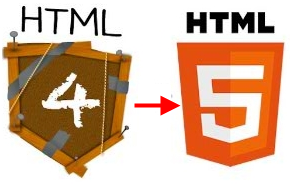However, HTML is a broad language and there is a lot to memorize. That’s why the following cheat sheet has been provided, providing easy reference to the most common and useful HTML codes.

New HTML elements
1 Work on evolutions of this specification proceeds at http://www.w3.org/TR/html/. The HTML5 Recommendation represents a milestone in the development of HTML but far from being the end of the road and improvements are already well under way.
New HTML API's
2The HTML5 specification has added a number of useful features in new APIs that you may not have delved into yet, likely because of the lack of browser support.
Removed in HTML5
3HTML5 has none of the presentational attributes that were in HTML4 as their functions are better handled by CSS. Some attributes from HTML4 are no longer allowed in HTML5 at all and they have been removed completely.
HTML History
4In 1980, physicist Tim Berners-Lee, then a contractor at CERN, proposed and prototyped ENQUIRE, a system for CERN researchers to use and share documents. In 1989, Berners-Lee wrote a memo proposing an Internet-based hypertext system.[3] Berners-Lee specified HTML and wrote the browser and server software in late 1990.